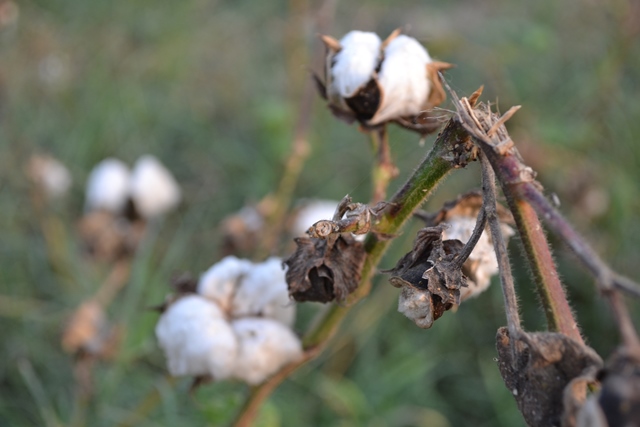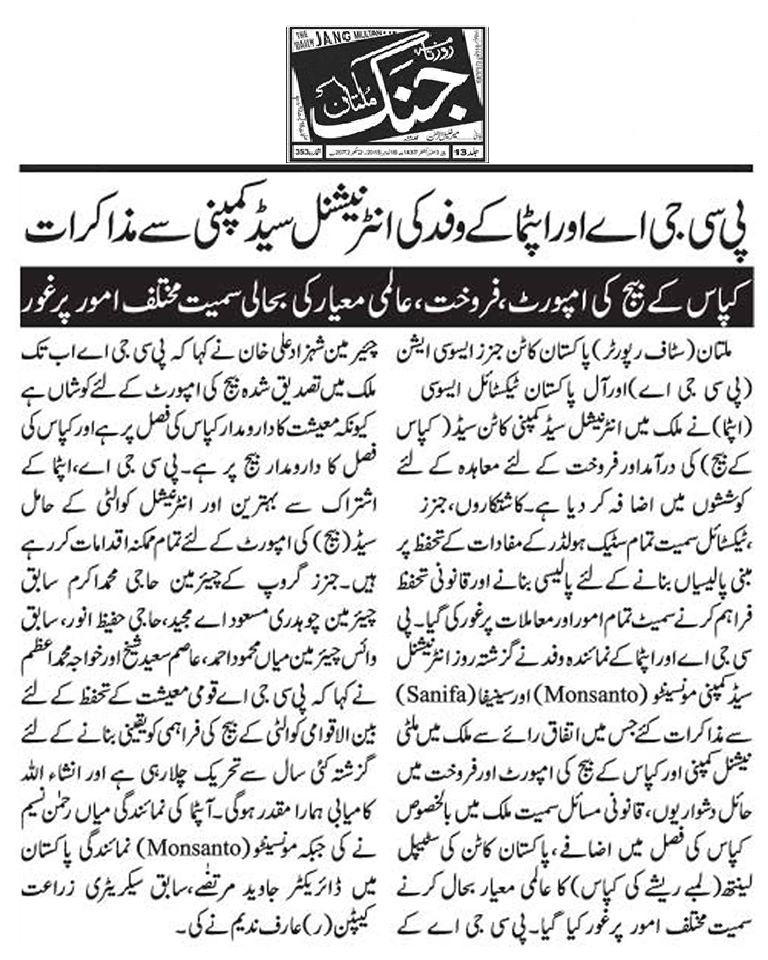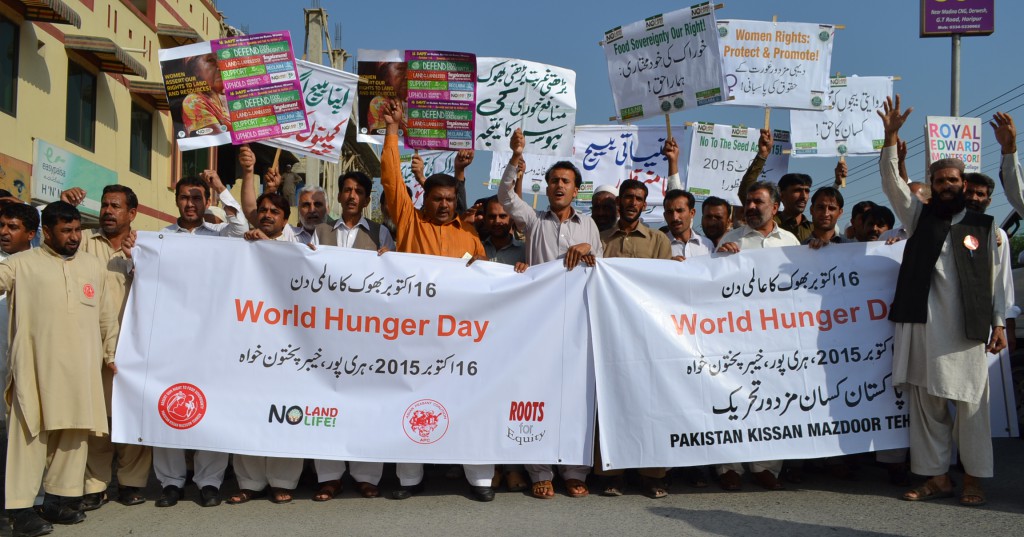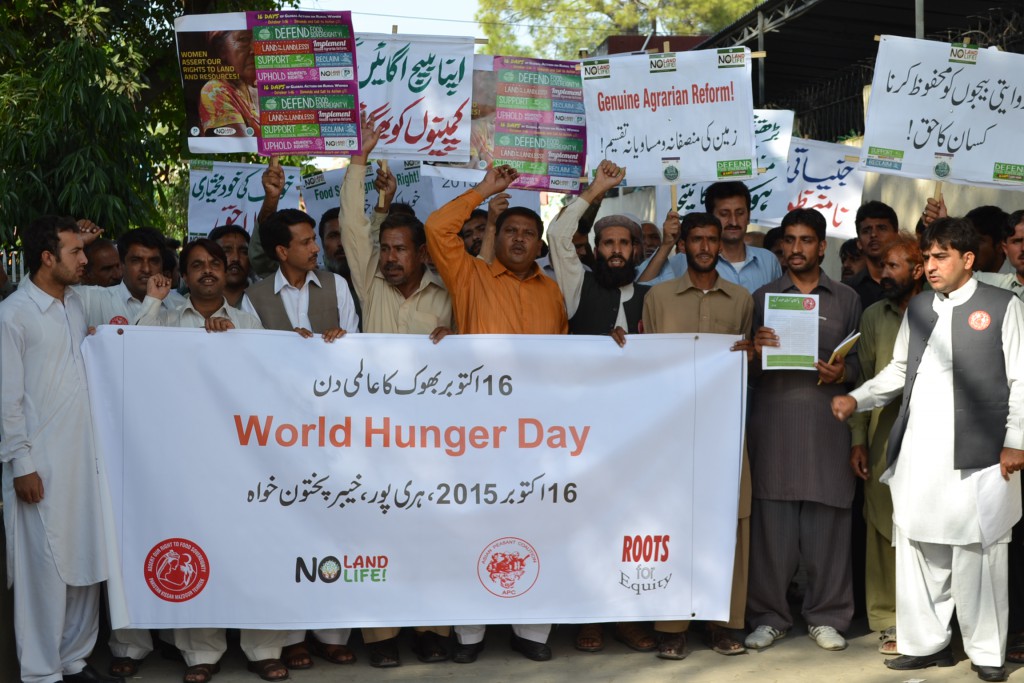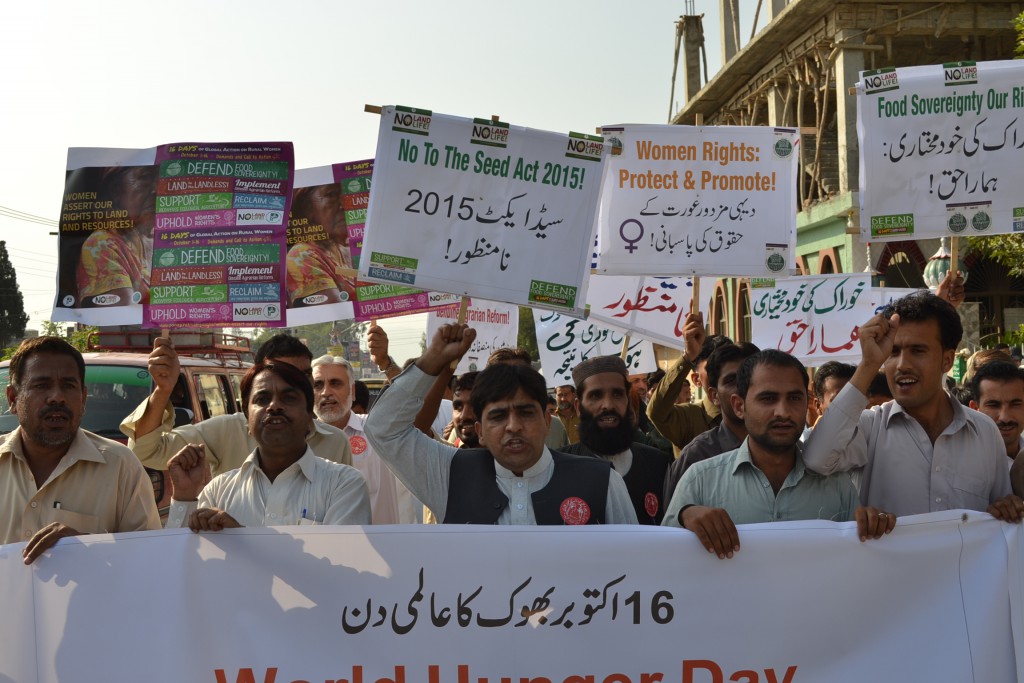Press Release
December 15, 2015
Pakistan Kissan Mazdoor Tehreek (PKMT) and Roots for Equity in collaboration with Asian Peasant Coalition (APC) carried out a protest outside Sukkur Press Club to register public resistance against the against the World Trade Organization (WTO) which is going to hold its 10th Ministerial Meeting December 15-18, 2015 in Nairobi.
The purpose of the WTO was to ensure control on global trade much of which is under the imperialist control of the advanced capitalist countries and their gigantic corporations. WTO’s Agreement on Agriculture (AoA) and TRIPS (Trade-related- Intellectual Property Rights) agreement are immensely exploitative of farmers across the world, especially small and landless farmers of third world countries. Agrochemical and biotechnology corporations especially the US corporations have been able to impose control over the rich genetic resources of the third world with the TRIPS agreement thereby paving the way for multinational companies to earn billions of dollars by patenting and trading hybrid and genetic seed, globally. On the other hand, farmers have not only lost their indigenous seeds but at the same time have become dependent on the inputs of agro-chemical corporations pushing them in a vicious cycle of high cost production, indebtedness, and loss of livelihood. Today a vast majority of the rural and urban population face hunger, and are living in acute poverty and misery.
The imperialist neoliberal policies of privatization, deregulation and trade liberalization pushed by the WTO, the IMF and the World Bank have resulted in poisoned lands, food and the destruction of environment which has had not only a tremendous impact on the health of people, especially women and children but also resulting in climatic disasters. No doubt these policies are based on the lust for super profits of the capitalist system.
The 9th Bali Ministerial was a big setback for the anti-globalization movement because it allowed capitalist economies to fast track their exports through a Trade Facilitation Agreement (TFA). TFA enforces developing countries to implement systems that allow a fast and smooth transport and transaction of goods at the custom check posts of countries. Pakistan has ratified the TFA in October 2015 and has become the 50th country that has ratified this agreement.
What is to be expected from the upcoming tenth WTO Ministerial to be held in Nairobi, Kenya? There is no doubt that further trade liberalization and market access is on the books. There is news that US and its allies are ongoing negotiations for a new agreement in the WTO, the Trade in Services Agreement (TISA). According to Wiki leaks, this negotiation is still being kept a secret. There is no doubt, that this new agreement will only lead to the further oppression and exploitation of small and landless farmers and workers.
Pakistan Kissan Mazdoor Tehreek (PKMT) rejects the WTO while holding it responsible for the destruction of lives and livelihood of small farmers, especially in the third world. PKMT demands the government that it should cancel its membership at the WTO and ask other governments to join hands in closing such an anti–farmer, anti-people organization. Such an action will break the imperialist stranglehold over Pakistan taking it towards a road of food and national sovereignty.


